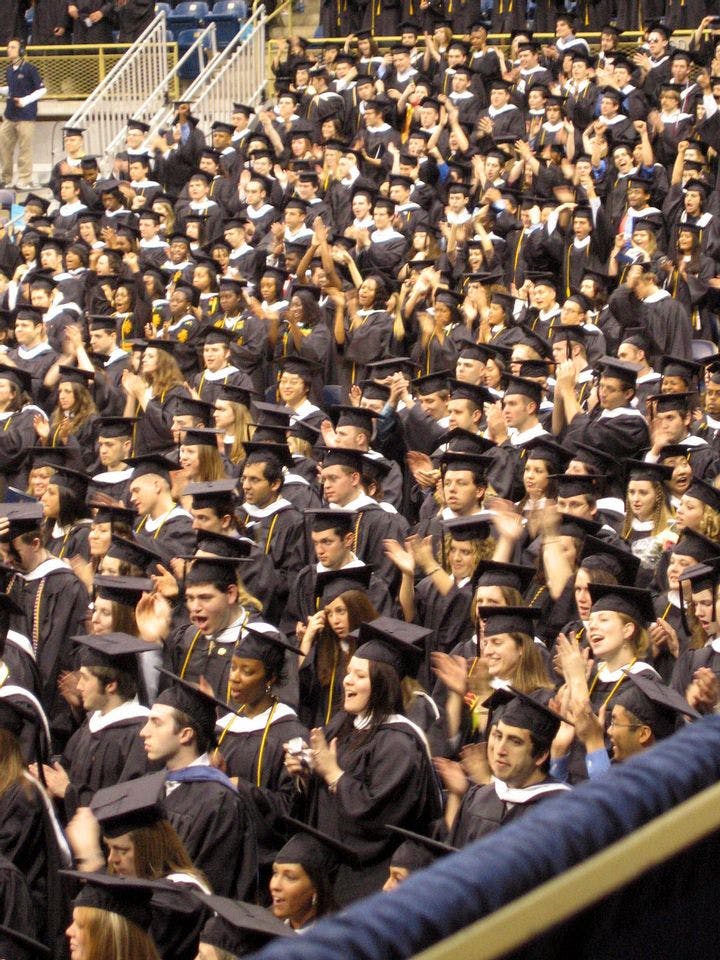Spring 2013
Study: when parents pay for college, students’ grades tend to slip
– The Wilson Quarterly
Students whose parents help pay are also more likely to graduate.
Most middle-class Americans want their kids to attend college. Parents set aside what money they can to pay fat tuition bills when the time comes. The hope is that youngsters will repay their parents with hard work on campus and a degree that puts them in good stead in the working world.
There’s one problem: Kids don’t fulfill the whole bargain.
In fact, undergraduates with financial support from mom and dad are more likely than others to let their grades slip, according to a report in American Sociological Review by Laura T. Hamilton, a sociologist at the University of California, Merced.
Drawing on a 1993 survey of college seniors, she found that a $16,000 parental subsidy every year pushed the average student’s grade point average (GPA) below 3.0 — the B considered the bare minimum by many graduate schools and employers.
The impact of financial help varied by family income level. Children of affluent families earned higher grades to begin with but exhibited the sharpest downward response to subsidies. A $2,000 subsidy by a low-income family had virtually no impact on grades. But one pattern remained clear throughout: The more money students received from their parents, the further their grades slipped. About 43 percent of the students received no financial help from their folks.
Students who take out loans also find their grades heading south. Like financial help from parents, loans seem to come with no strings attached. The day of repayment looms far in the future — and mom and dad might cover it anyway.
Do grades always sag when someone else foots the bill? Hamilton notes that GPAs actually edge higher when students are on scholarship or rely on grants, probably because these forms of assistance come with performance requirements. Work-study programs don’t have an impact on grades, she found.
Parents recoup their investment in one crucial respect. The more they pay, the less likely their children are to drop out. Hamilton cites a survey of 3,810 students who attended college between 1990 and 1994, in which it was found that undergraduates who received no help from their parents had a 56 percent chance of graduating. That probability jumped to 62 percent if parents provided a $4,000 yearly subsidy and began to plateau at 65 percent in cases in which they wrote a $12,000 check.
Why these contradictory trends in grades and graduation? When they have less skin in the game, students engage in what Hamilton calls “satisficing”: Rather than maximize the odds of an outstanding GPA by hitting the books, average students dedicate more time to social activities, lest they miss out on what they’re told are “the best years of your life.” Little wonder that American college students dedicate a paltry 28 hours a week to class and studying — fewer hours than high school students do — while spending 41 hours a week chatting on the quad and hanging out with friends.
In the past, students and their families might pay for college with the help of a grant from the federal government. Now that aid is more likely to come in the form of a federal loan. State and local subsidies to universities are also drying up, and tuition keeps rising.
Families of modest means can’t pick up the slack, which leads to bigger problems. “Disparities in the ability to fund a young-adult life stage may be one of the central mechanisms through which class inequalities are reproduced,” Hamilton writes.
Whether college education is being financed by student loans or money from mom and dad, parents need to keep an eye on their kids when they’re off at school. “Students with parental support are best described as staying out of serious academic trouble but dialing down their academic efforts,” Hamilton observes.
THE SOURCE: “More Is More or More Is Less? Parental Financial Investments During College” by Laura T. Hamilton. American Sociological Review, Jan. 3, 2013.
Photo courtesy of Flickr/KitAy
